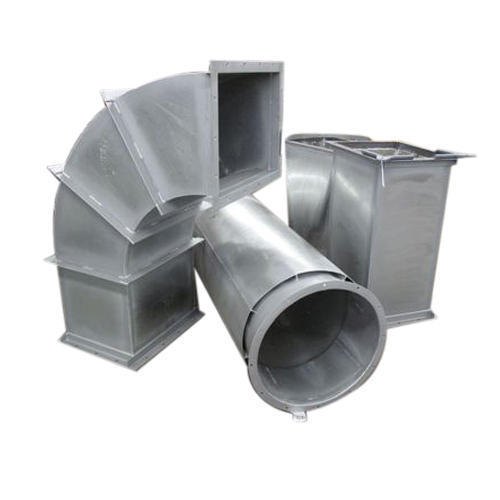
Black and Stainless Steel Ducts
Black steel and stainless steel are two distinct materials commonly used in the fabrication of ductwork for various applications. Here are some key differences between black steel and stainless steel ducts:
Black Steel Ducts:
- Material Composition: Black steel, also known as carbon steel, is primarily composed of iron and carbon. It may contain small amounts of other elements, but the carbon content is a defining characteristic.
- Corrosion Resistance: Unlike stainless steel, black steel is more prone to corrosion and rust. It requires protective coatings, such as paint or galvanization, to enhance its resistance to corrosion.
- Strength and Rigidity: Black steel is known for its strength and rigidity. It is a robust material suitable for applications where structural integrity is crucial, such as in heavy industrial environments.
- Cost: Black steel is generally more cost-effective than stainless steel, making it a common choice for applications where cost considerations are paramount.
- Weldability: Black steel is weldable and can be easily fabricated. It is commonly used in welding processes for constructing ductwork systems.
- Applications: Black steel ducts are often used in industrial settings, HVAC systems, and other applications where structural strength is essential and where the cost is a significant factor.
Stainless Steel Ducts:
- Material Composition: Stainless steel is an alloy composed of iron, chromium, nickel, and other elements. The addition of chromium provides stainless steel with corrosion resistance properties.
- Corrosion Resistance: Stainless steel is highly resistant to corrosion, making it suitable for environments with high humidity, chemicals, or corrosive substances. It does not require additional coatings for corrosion protection.
- Strength and Rigidity: While stainless steel is strong, it may not be as rigid as black steel. The specific grade of stainless steel used can affect its mechanical properties.
- Aesthetics: Stainless steel has a sleek and modern appearance, making it suitable for applications where aesthetics are important, such as architectural or high-end residential projects.
- Hygienic Properties: Stainless steel is easy to clean and maintain, making it a hygienic choice for applications in food processing, healthcare, and other industries with strict cleanliness requirements.
- Temperature Resistance: Stainless steel can withstand high temperatures, making it suitable for applications where heat resistance is essential.
- Applications: Stainless steel ducts are commonly used in industries such as food and beverage, pharmaceuticals, chemical processing, and architectural applications where corrosion resistance and aesthetic appeal are crucial.
In summary, the choice between black steel and stainless steel ducts depends on the specific requirements of the application, including factors such as corrosion resistance, cost, strength, and aesthetic considerations. Each material has its advantages and is selected based on the priorities of the project.